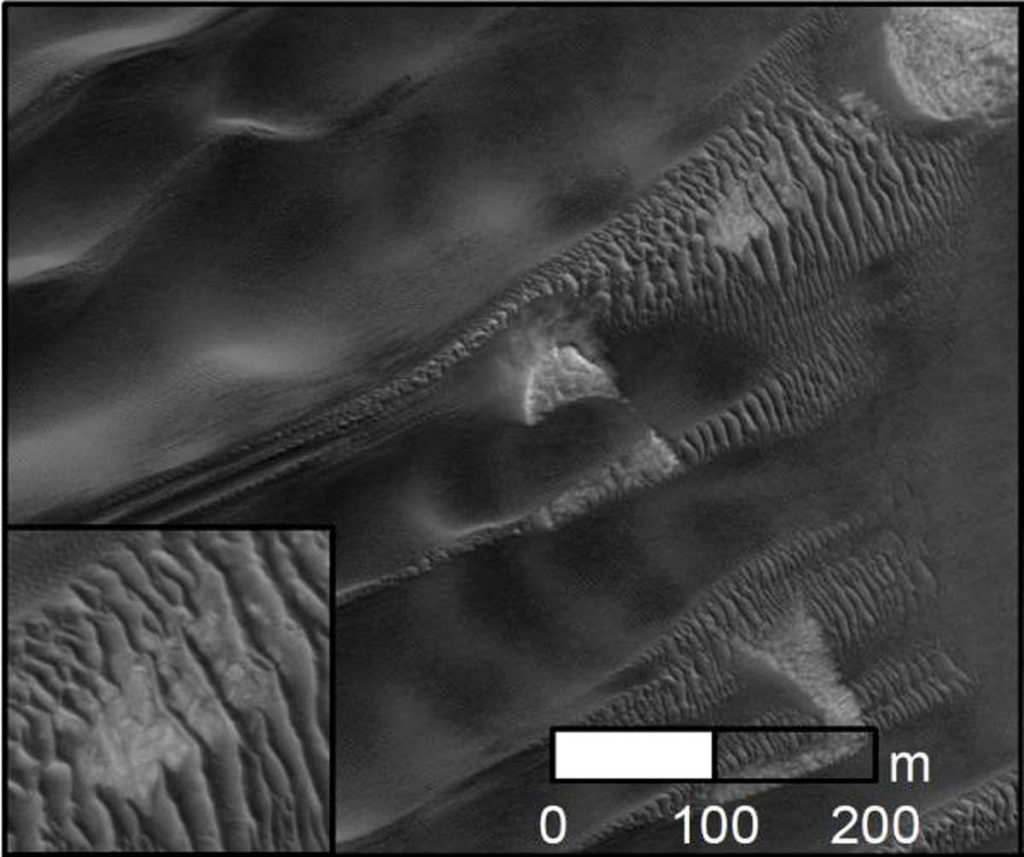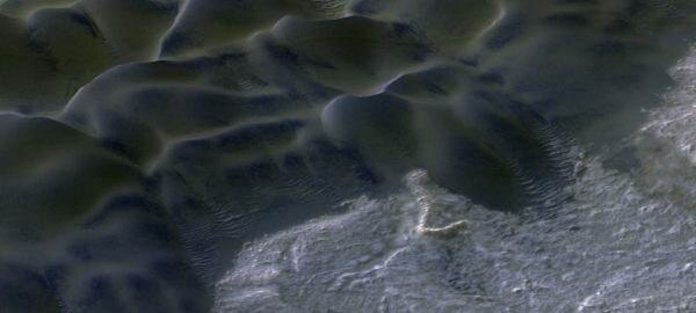Intermediate-scale bedforms caused by the action of the wind is called Megaripples. This phenomenon is studied by scientists and they thought that it is a largely inactive relics of past climates. Matthew Chojnacki, a Planetary Science Institute Research Scientist, shows that abundant megaripple populations were identified across the north polar region of Mars. It was migrating with dunes and ripples.
Those Megaripples were about 1 to 2 meters tall. They have 5 to 40 meters spacing. Where their size falls between ripples that are about 40 centimetres tall and have 1 to 5 meters spacing. The migration rates of megaripples are slow in comparison to Earth. Scientists found some of the nearby ripples to migrate an average equivalent of 9.6 meters per year over just 22 days in northern summer. The high-rate sand movement will explain the megaripple activity.

Planetary polar landforms are the long, cold polar winter which covers the region in carbon dioxide and water ice. Megaripples, as they are wind-driven bedforms, are unable to migrate for nearly half of the year.
Megaripples are transverse aeolian bedforms which forms when wind-driven saltating grains impact upon and drive coarser grains in creep.

